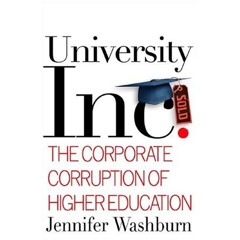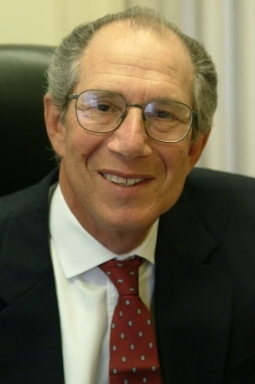The Corporate Corruption of Higher Education: part 1
The next post is about examples from the UK.
 |
|
The problem in the USA came to the fore with the passage of the Bayh-Dole Act (1980). This act allowed universities to patent ‘inventions’ that came from research funded by the taxpayer, and, far worse, allowed them to grant exclusive licences to a single commercial company. Although as originally formulated the act contained safeguards, these were mostly stripped out by the time it was passed. The nominal reason for the Act was “to bring ideas out of the ivory tower and into the market place more quickly”.
Nothing wrong with that of course. But Washburn chronicles how, not only did it fail to fulfil that aim, but corrupted universities as well. In fact with only a handful of exceptions, it did not even generate any large income for the universities. Nevertheless, the Act is still in place.Here are some examples from the USA. Examples from the UK are in a separate post.
Stanford University, Garry Nolan and Rigel Pharmaceuticals
David Zapol went from MIT to be a graduate student in Stanford, in June 1996. At the time he arrived his supervisor, Garry Nolan, set up a company, Rigel Pharmaceuticals Inc. to exploit genomic screening Stanford licensed to technology exclusively to Nolan’s company.
Although the lab was meant to be separate from the Company, that was obviously impossible. Zapol, and fellow student Michael Rothenberg,. were asked by Nolan to work on “proof of concept” for Rigel’s technology. The students found that “I can;t get time with my adviser and he’s completely preoccupied” [with the company]. A year later, Rothenberg came to the lab distraught, and told Zapol he’d been at Rigel’s offices hand had seen their “proof of concept” work shown in a company presentation for investors, with no acknowldegment of their authorship. Only they and Nolan knew about the work.
Washburn comments
When I asked Nolan to to respond to Zapol’s allegations concerning Rigel’s misuse of his students’ data, he replied in writing
“I do not have a memory of this event”
The research on which the spin-off company was based was (as so often) still unproven, and the two graduate students found themselves competing with scientists in the (better-finded) company owned by their supervisor. If the latter won, the university graduate students would end up with nothing to publish.
When, in 1997, Rothenberg emailed his supervisor, Nolan, the reply he got was openly threatening
“Please, do not be referring to this situation as ‘Rigel’s inappropriate use of my data without referencing me’ “. “Be careful what you say”
In April 1997, Rothenberg (who worked in the university remember) was warned by an executive of the company, Donald Payan, not to communicate with a colleague in another university who was working in the same area.
“You should know that he is one of the founders of Selectide, a major competitor of ours . . . ” “. The guys here will be less than pleased if the ideas they give you re structures etc . . . end up in the hands of Selectide. Get my drift?”.
Stanford seems to have made few attempts to investigate the matter properly. Both graduate students left (with no peer-reviewed publications). Nolan is still there. Why is this? Stanford University (as well as Nolan) had substantial equity in Rigel (sold in 2000-01 for over $0.9m) and Stanford owned six of Nolan’s patents. What do the careers of two graduate studenst matter when there are big bucks at stake? Not much it seems.
Rigel, incidentally, has yet to produce a useful drug, eleven years after
its founding
Washburn’s book has many such examples. What is particularly upsetting about them is, in many cases, not so much the behaviour of greedy or dishonest scientists, but the behaviour of their employers. In any case where much money is at stake, the university fails to defend the honest scientists, but is more interested in its income than in truth. One has come to expect companies to behave in this way. It is a shock to see universities do the same.
GSK, Seroxat and Brown University: academics for hire, a shocking story
BBC TV’s Panorama programme showed the latest investigation of GlaxoSmithKline’s suppression of evidence of side effects of Paroxetine (Seroxat, Paxil). It seems that television journalists and lawyers have been a great deal more effective in unearthing the evidence than the regulatory authorities or the police. The MHRA has been working on the case for three years and has still not produced its report. Read the transcript here .
Lawyers in the USA managed to extract many secret emails from GSK, and they tell a sad story. Since the deregulation of industry that started around 1979 with Ronald Reagan and Margaret Thatcher, one has become accustomed to dishonesty by big business. But academics are involved too GSK organised three large scale clinical trials of Seroxat on children with depression, in the hope of getting Seroxat licensed for this use. The biggest of these is known as ‘Study 329’. It is these trials that have given rise to the charge that GSK tried to suppress evidence that Seroxat caused an increase risk of suicide in young people.
Martin Keller is chair of psychiatry at Brown University. The evidence found by Panorama also shows that his reputation seems to be for hire. His university home page shows that he holds many influential politicians. It does not mention that in one year he got half a million dollars from drug companies including GSK.In one email Keller thanks a ghost writer who worked for a PR company hired by GSK.
|
 |
In another mail from the ghost writer to Dr Keller says that all the necessary materials are enclosed so that he can submit study 329 for publication, even down to the covering letter which says: “please re-type on your letterhead. Revise if you wish.”. Perhaps Keller at least checked the results carefully? But it seems not. Keller said
“I’ve reviewed data analytic tables, I don’t recall how raw it was. The huge printouts that list items by item number.. you know, item umbers, invariable numbers and don’t even have words on ’em. I tend not to look at those. I do better with words than I do with symbols.”
The BBC reporter , Shelley Jofre, comments “Inside GSK, though, the discussion was all about what a failure study 329 had been. This is what another of its PR people wrote when asked if the journal article would be publicised.” “Originally we had planned to do extensive media relations surrounding this study until we actually viewed the results. Essentially the study did not really show it was effective in treating adolescent depression which is not something we want to publicise.” [Email dated: 5th March 2001]
This is bad as any quackery, and the collusion of academics is very sad.
Brown University does not appear to have learned the lesson. The news section on their web site boasts of this ghost written work
“The largest clinical trial studying the use of antidepressants for treating major depression in adolescents suggests that paroxetine, sold under the brand name Paxil, may be successful.
“This is the first substantial evidence of a safe and effective treatment with an antidepressant for adolescents,” said Martin B. Keller, M.D., who led the study, which appears in the July issue of the Journal of the Academy of Child and Adolescent Psychiatry .”
Fiona Godlee , editor of the British Medical Journal, spoke on the programme. She had spotted the problems with the paper and declined to publish it. She comments “Another journal had peer reviewers who also spotted a number of the problems but the paper was published nonetheless relatively unchanged, and I think the journal must take some responsibility for that.”The editor of the ‘other journal’ ( Journal of the Academy of Child and Adolescent Psychiatry ) expressed no regrets.
See also “Ghost Authorship in Industry-Initiated Randomised Trials” by Gotzsche et al. ( PLOS Medicine 2007 ), and the commentary by Wagner , “Authors, Ghosts, Damned Lies, and Statisticians”. The latter concludes
“perhaps we should now admit that there are four types of lie: lies, damned lies, statistics, and the authorship lists of scientific papers, and that statisticians may be able to help prevent both the third and fourth types.”.


Talking of Brown Univ, David, you might also want to check out the story of the David Kern affair.
It is indeed as bad, if not even worse, than quackery and just gives ammunition to anti-science conspiracy theorists. It is very commendable of you to broach these murky issues.
There are some encouraging signs, however, of critical self-appraisal in this respect, e.g. the paper by Eric Campbell in JAMA, Oct. 17, reported here: http://www.nlm.nih.gov/medlineplus/news/fullstory_56236.html . Reportedly the first attempt to document the extent of institutional relationships in the US between the pharmaceutical industry and medical schools.
Thanks for that interesting reference Claire.
Some people are taking seriously the problem of putting our own house in order. You can download the original reprint here (until the copyright people jump on me at least).
I wonder what the numbers are for the UK?
While you are on the subject of Brown U, David, have you checked out the David Kern affair from about a decade ago? And then of course there was the Nancy Olivieri case in Toronto.
Sadly, it seems no country’s universities are free of malign influence.
[…] is obvious from the last two posts ( here and here ) that ghost writing of papers has became a major menace to science in the clinical world. […]
[…] sc_invisible=0; sc_partition=0; sc_security=""; ← Universities Inc. in the USA A conversation with a ghost writer […]
[…] Moved to this blog from the old IMPROBABLE SCIENCE page: see Universities Inc […]
[…] This post was mentioned on Twitter by dbaptista. dbaptista said: RT @david_colquhoun: GMC acts on ghost writing http://bit.ly/pPIg See http://bit.ly/UkQCV and http://bit.ly/NFC1Z and http://bit.ly/3tLcb […]
[…] the paper wasn’t written by them, but by ghost authors working for GSK. Keller admitted that he hadn’t checked the results […]